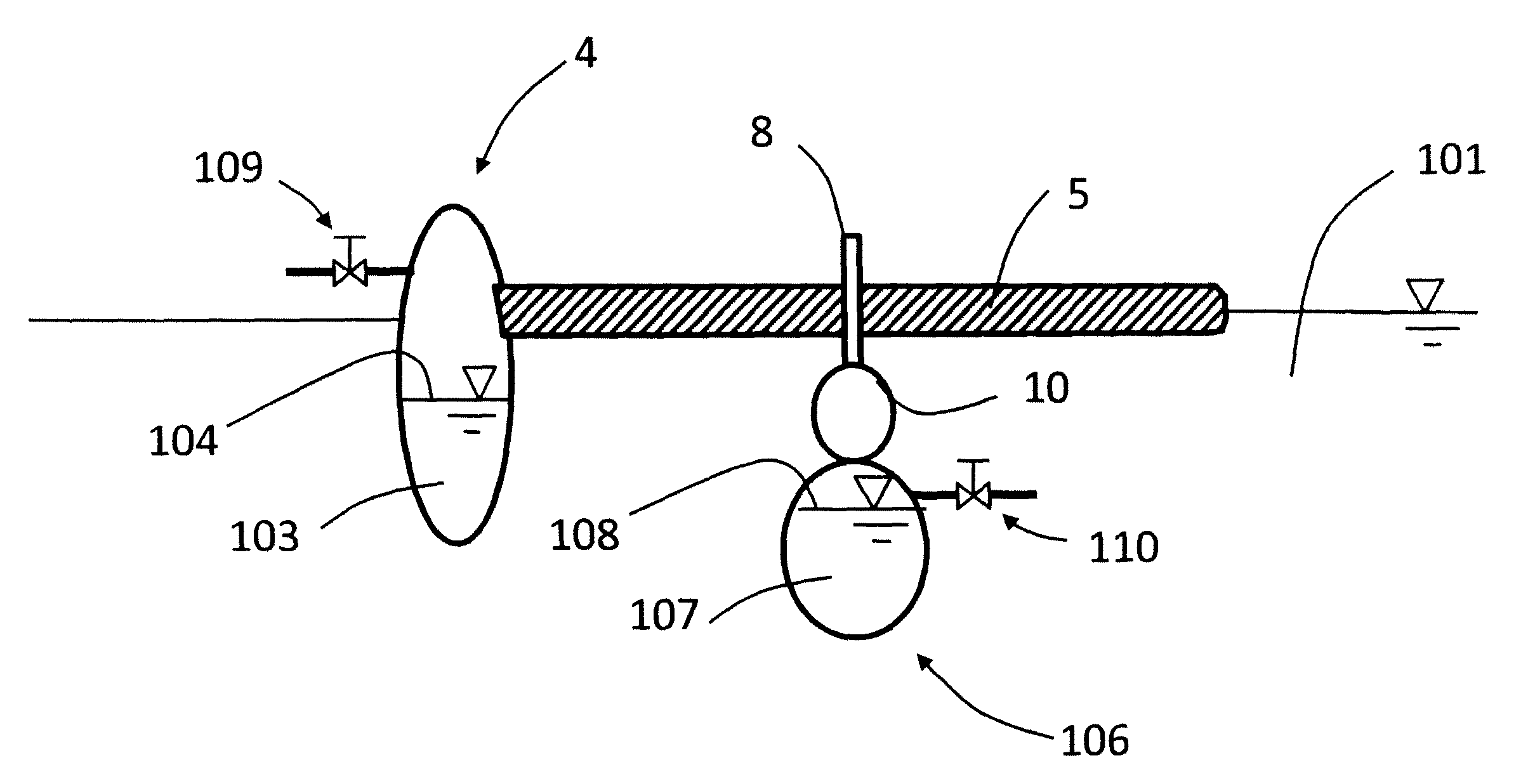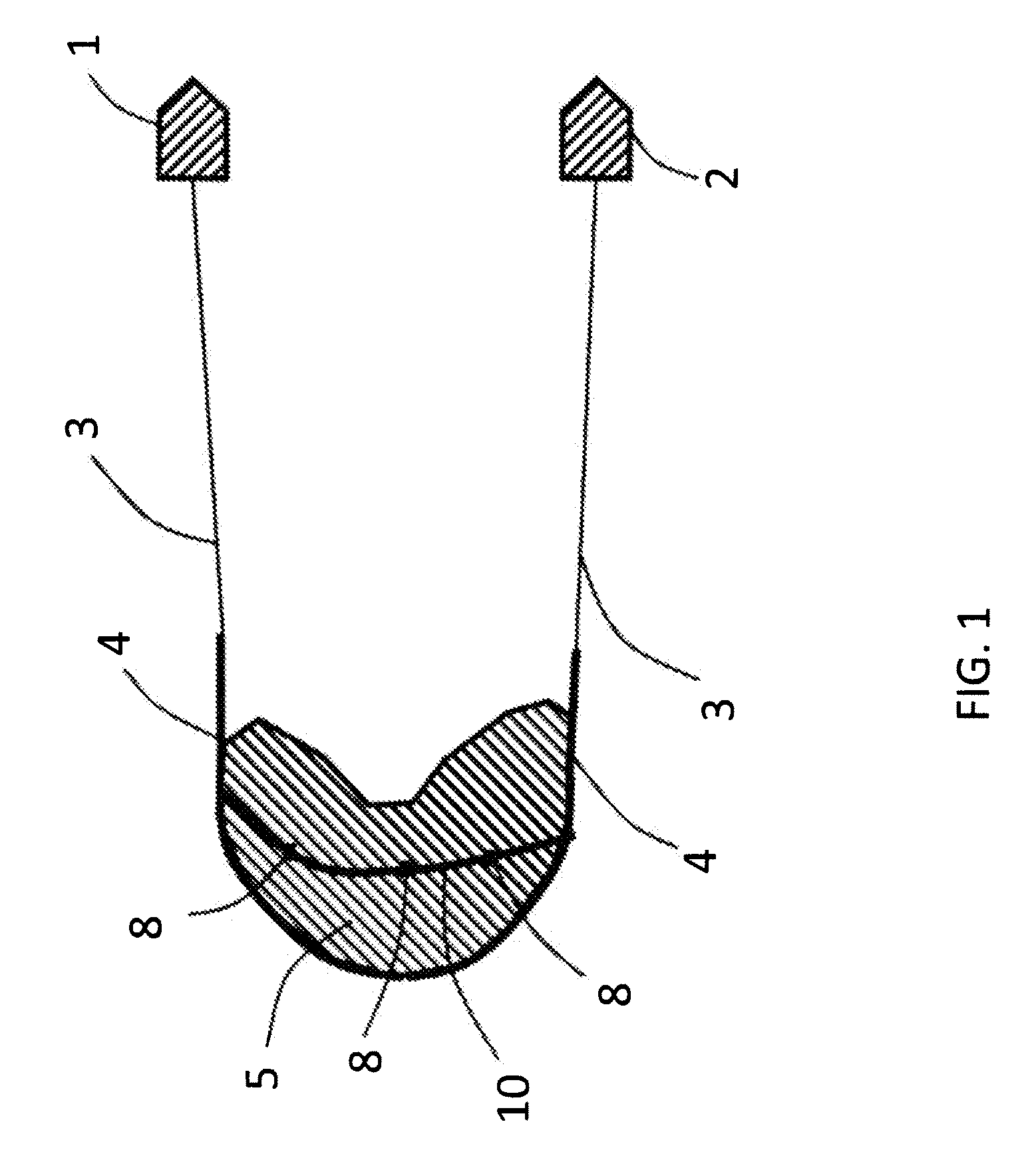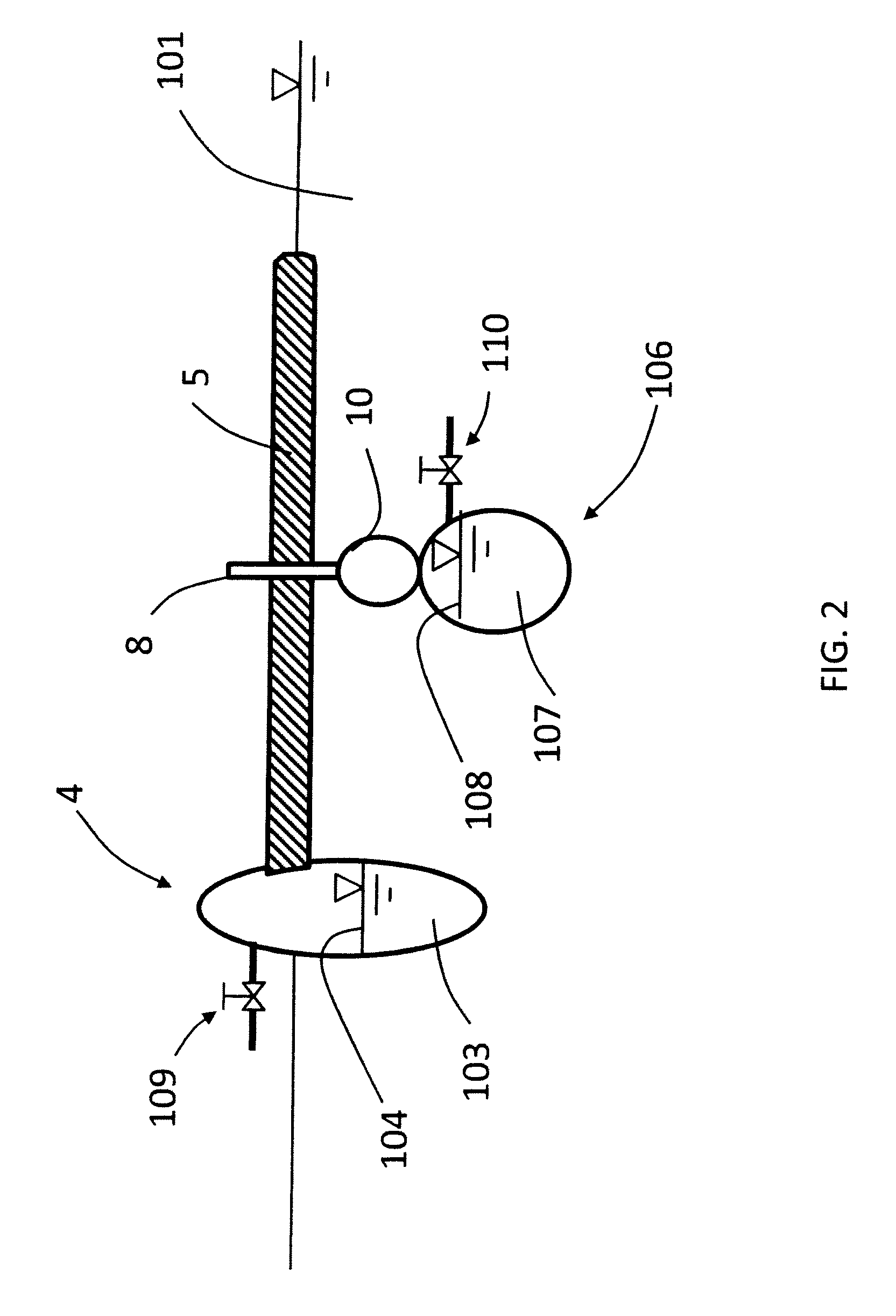Combustion of oil floating on water
- Summary
- Abstract
- Description
- Claims
- Application Information
AI Technical Summary
Benefits of technology
Problems solved by technology
Method used
Image
Examples
examples
[0088]Laboratory scale experiments were conducted. Experiments were conducted using a 10 cm diameter container and a 20 cm diameter container. The 10 cm diameter container provides a turbulent flame with convective heat transfer feedback. The 20 cm diameter container provides a turbulent flame which is in the transition region for radiant heat transfer feedback, as in a large pool fire. Number 2 fuel oil was used as the flammable liquid.
[0089]Both the 10 cm container and the 20 cm diameter container are 20 cm tall. Approximately 17.5 cm of the container was filled with water, and up to 2.5 cm of No. 2 fuel oil was floated on top of the water. An oxidant injection tube was placed near the center of the container. The tube was capped at the end. Six orifices were drilled on the side of the tube near the cap to inject oxidant substantially horizontally across the oil surface, and one orifice was drilled through the center of the cap to inject oxidant substantially upward as illustrated...
PUM
 Login to View More
Login to View More Abstract
Description
Claims
Application Information
 Login to View More
Login to View More - R&D
- Intellectual Property
- Life Sciences
- Materials
- Tech Scout
- Unparalleled Data Quality
- Higher Quality Content
- 60% Fewer Hallucinations
Browse by: Latest US Patents, China's latest patents, Technical Efficacy Thesaurus, Application Domain, Technology Topic, Popular Technical Reports.
© 2025 PatSnap. All rights reserved.Legal|Privacy policy|Modern Slavery Act Transparency Statement|Sitemap|About US| Contact US: help@patsnap.com



